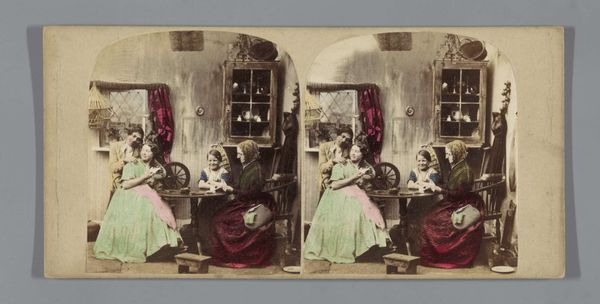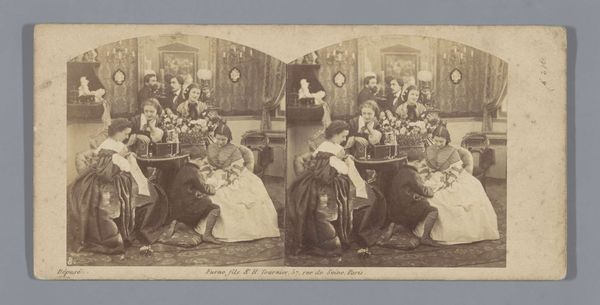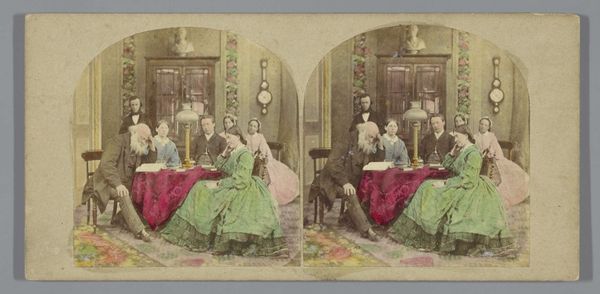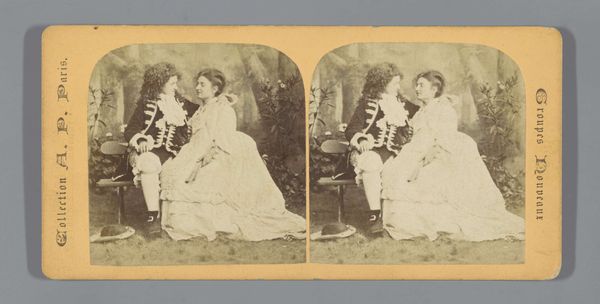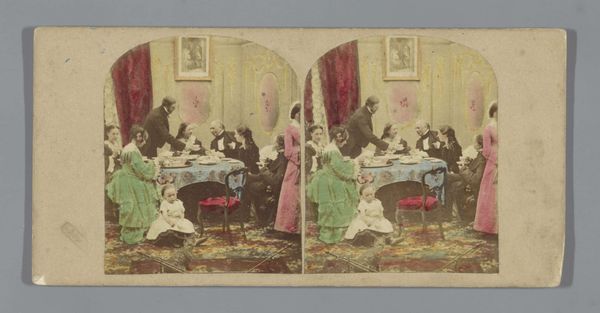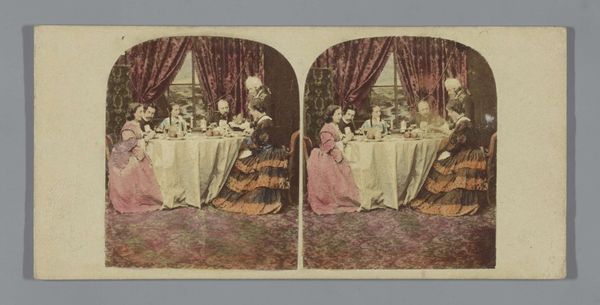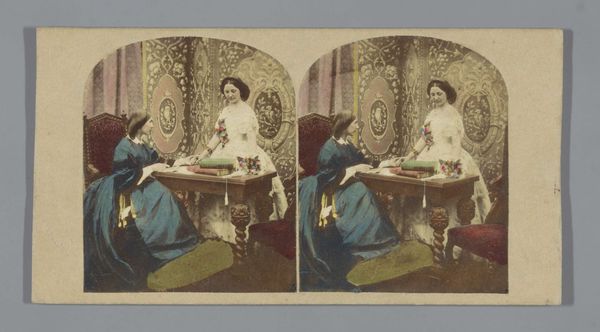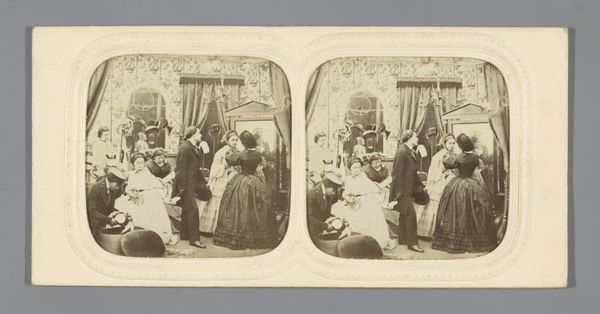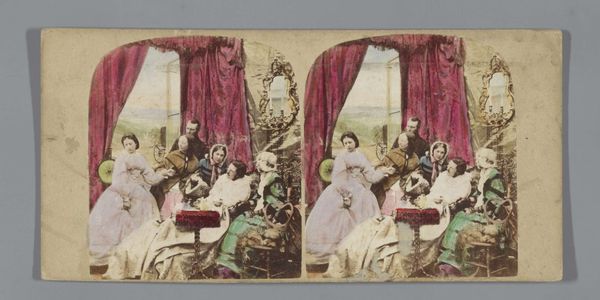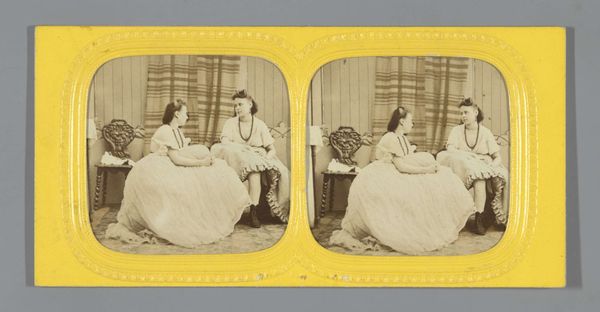
Dimensions: height 84 mm, width 174 mm
Copyright: Rijks Museum: Open Domain
Curator: This photographic image, dating from around 1852-1863, presents a “Huiselijk tafereel met schakende mensen”—a domestic scene with people playing chess. Editor: There’s such stillness, a gentle, almost melancholic mood hanging in the air, don’t you think? It's like a frozen moment of polite domesticity. The way they’re posed…it almost feels like a stage play. Curator: Indeed. What we're viewing here is likely an albumen print, potentially touched with coloured pencil, characteristic of its era. The stereoscopic format—those almost identical twin images—was extremely popular at the time. Editor: Yes! the choice of framing creates the depth. If we look more precisely at the left panel, the gaze falls through a gap formed by two figures, moving between different scales of detail. Our eye moves between those three areas until we are met by an obstacle...which begins the circuit again but now toward the figures seated by the table, each focused in the game with its high tones and minute precision that adds up as one continuous, albeit fragmented, experience of reality. Curator: And notice how staged it all feels! The slightly awkward poses, the ornate props... They're creating an idealized version of domestic life. It's less about reality, more about aspiration and visual storytelling. The chess game acts as the narrative device. Editor: The details of the room’s materiality speak about its context and place—furniture, wall decoration and portraits in the wall. However, the presence of photographic doubling makes the depicted setting less real. The very principle of stereo photography presupposes deception as it depends on binocular vision to trick the brain into imagining that two offset images shot from slightly different positions represents one image and one viewpoint! So perhaps all its material components of room, figure and prop all point to artifice from the start, from the very nature of stereography? Curator: Perhaps. Looking closer though, one also discerns hints of character, emotion behind their controlled postures... an emotional life peeking from under this construction, like real people peeking beneath the set designs. Editor: Well, for me, what strikes me most is how such formal structures can communicate so powerfully. Curator: Absolutely. Despite the obvious construction, one cannot stop interpreting an artwork that touches on a very personal register in how lives lived in the space in their time, for us.
Comments
No comments
Be the first to comment and join the conversation on the ultimate creative platform.
